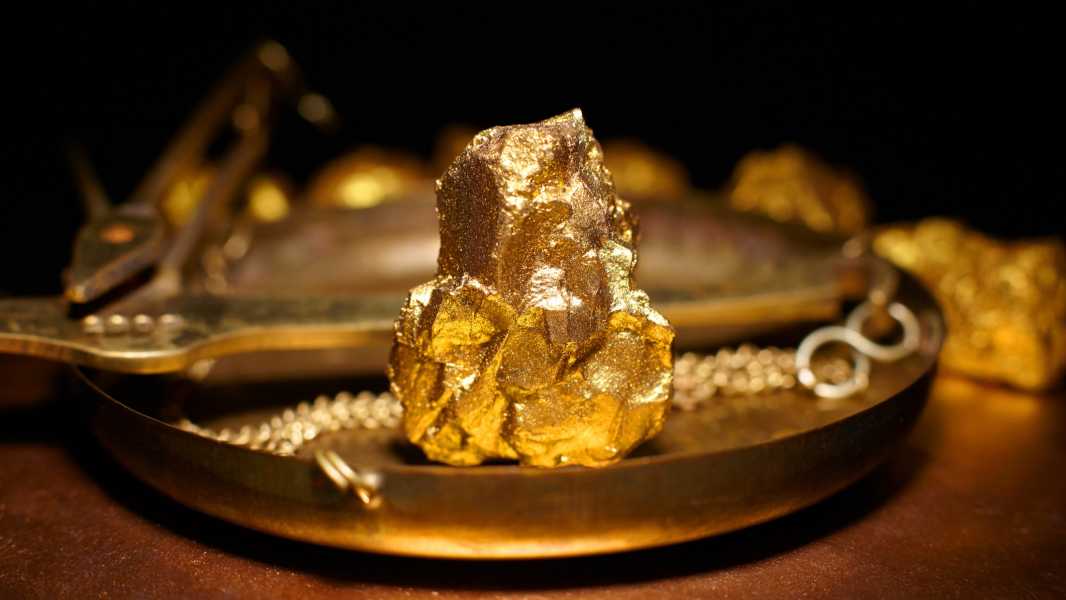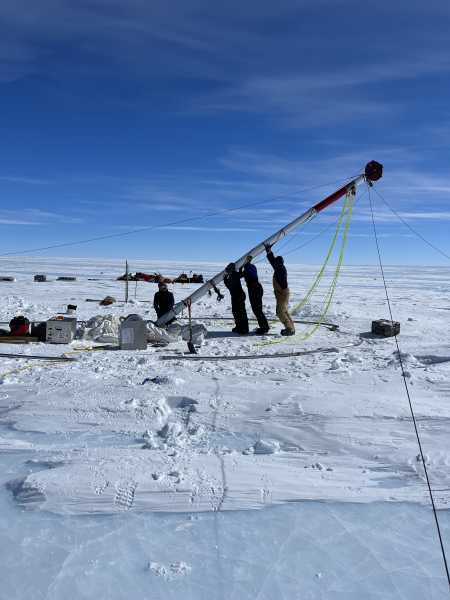
Humanity has extracted a significant proportion of the gold that can be economically obtained from the earth's crust. (Image credit: bodnarchuk via Getty Images)
Gold is a heavy metal and one of the rarest elements on the planet, formed in space when neutron stars collide. But how rare is gold on Earth and how much of it is there in the world today?
To answer these questions, it’s best to start with the amount of gold humans have mined to date. The U.S. Geological Survey (USGS) estimates that humans have extracted about 206,000 tons (187,000 metric tons) of gold from rocks and rivers throughout history, with most of the gold mined and produced used to create jewelry.
That estimate is significantly lower than that provided by the World Gold Council, which says 238,391 tons (216,265 metric tons) of gold have been mined to date — enough to fit in a cube measuring about 72 feet (22 meters) on each side. About 45 percent of that gold has been used to make jewelry, 22 percent is stored as gold bars and coins, and 17 percent is held by central banks, the council said.
You may like
- 'It's like trying to grow a tree in an oven': Gold mining is drying up the Amazon rainforest
- Earth's 'Leaking' Core and Strange Signals from Space
- Gold coins from 'world's richest shipwreck' reveal 300-year-old images of castles, lions and Jerusalem crosses
Humanity has extracted much of the gold that can be economically mined from the Earth’s crust, but reserves still exist. In the latest USGS Mineral Commodity Summaries report on gold, the agency found that about 70,550 tons (64,000 metric tons) of gold remain in economically viable deposits around the world. The largest countries with untapped gold reserves are Russia, Australia, and South Africa, the report says, but China produced and offered more gold to the market in 2024 than any other country.
Experts distinguish between reserves, or the portions of an ore deposit that can be extracted economically, and resources, which are ore deposits about which explorers and companies have less geological knowledge and confidence. According to the World Gold Council, which uses data from research consultancy Metals Focus, global gold reserves are 60,370 tonnes (54,770 metric tons), while gold resources are estimated at about 145,626 tonnes (132,110 metric tons).
Together, the USGS and World Gold Council estimates suggest that human artifacts and known crustal deposits contain between 277,000 and 299,000 tons (251,000 and 271,000 metric tons) of gold. But there is a lot of uncertainty in that figure.
Moreover, most of the gold on Earth is not in concentrated deposits or on the surface. Microscopic gold grains and nuggets that are impractical to extract are found throughout the crust, and such particles are especially common in seawater and igneous rocks, according to the University of California, Berkeley. The concentration of gold in the Earth’s crust is about 4 parts per billion, or 0.004 grams per metric ton, so all the particles in the crust combined probably weigh about 441 million tons (400 million metric tons), according to the Royal Mint.
If that sounds like a lot of gold, it's still only a small fraction of what
Sourse: www.livescience.com





